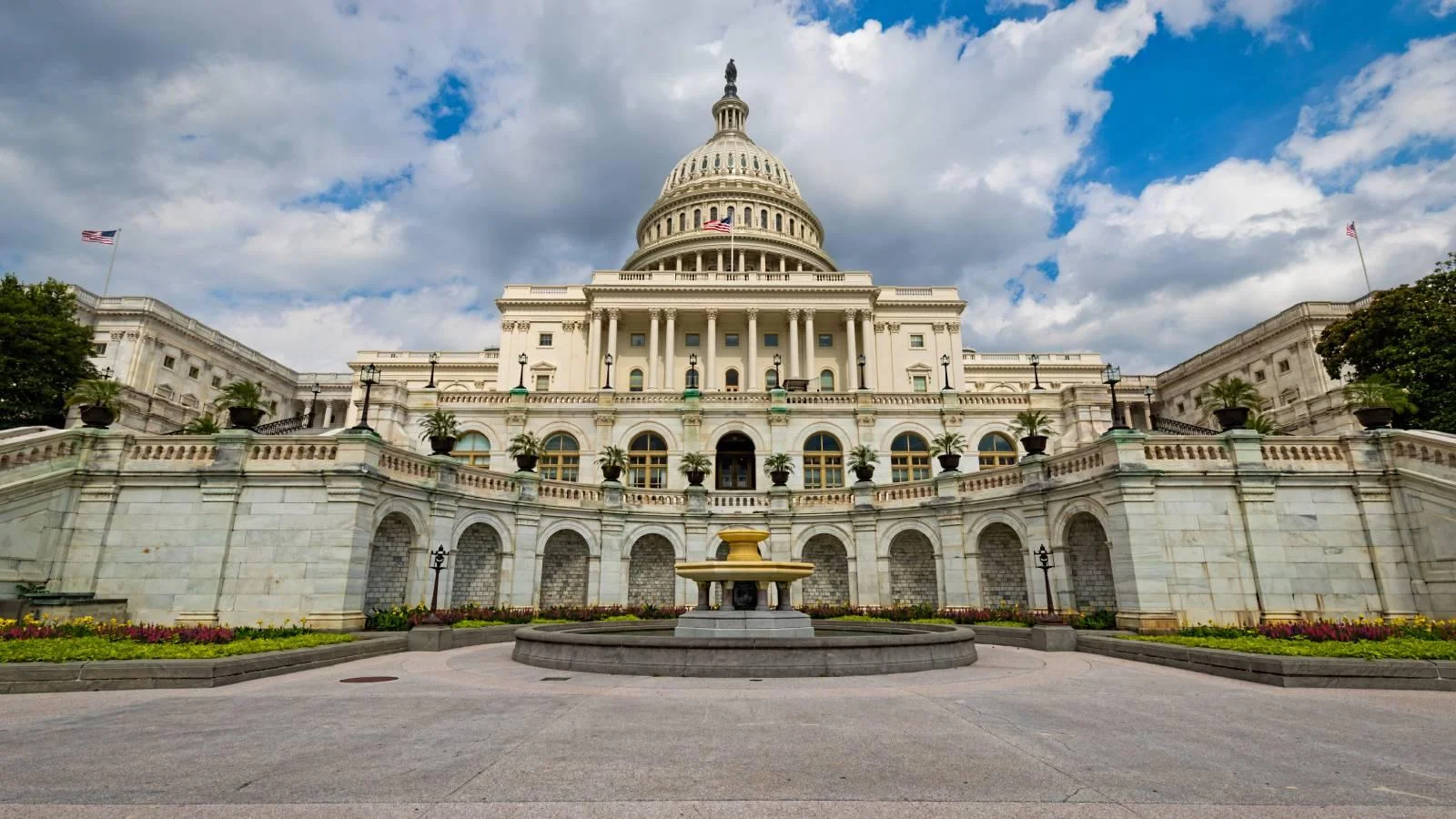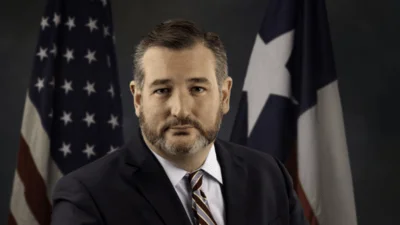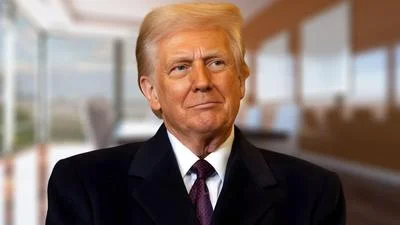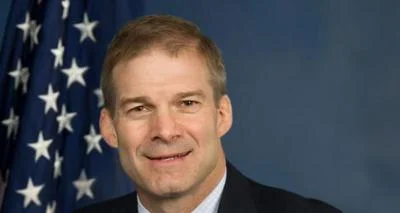The Congressional Record is a unique source of public documentation. It started in 1873, documenting nearly all the major and minor policies being discussed and debated.
“TEXT OF AMENDMENTS” mentioning the U.S. Dept. of Transportation was published in the Senate section on pages S759-S762 on Feb. 15, 2011.
The publication is reproduced in full below:
TEXT OF AMENDMENTS
SA 86. Mr. INHOFE submitted an amendment intended to be proposed by him to the bill S. 223, to modernize the air traffic control system, improve the safety, reliability, and availability of transportation by air in the United States, provide modernization of the air traffic control system, reauthorize the Federal Aviation Administration, and for other purposes; which was ordered to lie on the table; as follows:
On page 245, between lines 7 and 8, insert the following:
(g) Special Rule for Model Aircraft.--
(1) In general.--Notwithstanding any other provision of law relating to the incorporation of unmanned aircraft systems into FAA plans and policies,, including this section, the Administrator shall not promulgate any rules or regulations regarding model aircraft or aircraft being developed as model aircraft if such aircraft is--
(A) flown strictly for recreational, sport, competition, or academic purposes;
(B) operated in accordance with a community-based set of safety guidelines and within the programming of a nationwide community-based organization; and
(C) limited to not more than 55 pounds unless otherwise certified through a design, construction, inspection, flight test, and operational safety program currently administered by a community-based organization.
(2) Model aircraft defined.--For purposes of this subsection, the term ``model aircraft'' means a nonhuman-carrying (unmanned) radio-controlled aircraft capable of sustained flight in the atmosphere, navigating the airspace and flown within visual line-of-sight of the operator for the exclusive and intended use for sport, recreation, competition, or academic purposes.
______
SA 87. Mr. BEGICH (for himself and Ms. Murkowski) submitted an amendment intended to be proposed by him to the bill S. 223, to modernize the air traffic control system, improve the safety, reliability, and availability of transportation by air in the United States, provide modernization of the air traffic control system, reauthorize the Federal Aviation Administration, and for other purposes; which was ordered to lie on the table; as follows:
Beginning on page 307, strike line 1 and all that follows through page 310, line 10, and insert the following:
SEC. 730. TRANSPORTATION OF COMPRESSED OXYGEN AND OXIDIZING
GASES WITHIN ALASKA.
(a) Authorization.--Subject to subsection (b), in circumstances in which it is impracticable to transport compressed oxygen and other oxidizing gases within the State of Alaska through transportation modes other than by aircraft, the transport of such gases within Alaska shall not be subject to the requirements under--
(1) paragraphs (3), (4), and (5) of section 173.302(f) of title 49, Code of Federal Regulations;
(2) paragraphs (3), (4), and (5) of section 173.304(f) of such title; and
(3) appendices D and E of part 178 of such title.
(b) Limitation on Cylinder Size.--The regulatory exemptions set forth in subsection (a) shall not apply to the transport of individual cylinders of compressed oxygen or other oxidizing gases with a capacity greater than 281 cubic feet unless such transport takes place on cargo only aircraft.
______
SA 88. Mr. McCAIN (for himself, Mr. Kyl, and Mr. Ensign) submitted an amendment intended to be proposed by him to the bill S. 223, to modernize the air traffic control system, improve the safety, reliability, and availability of transportation by air in the United States, provide modernization of the air traffic control system, reauthorize the Federal Aviation Administration, and for other purposes; which was ordered to lie on the table; as follows:
At the end of title VII, add the following:
SEC. 733. DETERMINATIONS WITH RESPECT TO SUBSTANTIAL
RESTORATION OF NATURAL QUIET AND EXPERIENCE IN
GRAND CANYON NATIONAL PARK.
(a) In General.--Notwithstanding any other provision of law, for purposes of section 3(b)(1) of Public Law 100-91 (16 U.S.C. 1a-1 note), the substantial restoration of the natural quiet and experience of the Grand Canyon National Park (in this subsection referred to as the ``Park'') shall be considered to be achieved in the Park if, for at least 75 percent of each day, 50 percent of the Park is free of sound produced by commercial air tour operations that have an allocation to conduct commercial air tours in the Park as of the date of the enactment of this Act.
(b) Considerations.--
(1) In general.--For purposes of determining whether substantial restoration of the natural quiet and experience of the Park has been achieved in accordance with subsection
(a), the Secretary of the Interior (in this section referred to as the ``Secretary'') shall use--
(A) the 2-zone system for the Park in effect on the date of the enactment of this Act to assess impacts relating to subsectional restoration of natural quiet at the Park, including--
(i) the thresholds for noticeability and audibility; and
(ii) the distribution of land between the 2 zones; and
(B) noise modeling science that is--
(i) developed for use at the Park, specifically Integrated Noise Model Version 6.2;
(ii) validated by reasonable standards for conducting field observations of model results; and
(iii) accepted and validated by the Federal Interagency Committee on Aviation Noise.
(2) Sound from other sources.--The Secretary shall not consider sound produced by sources other than commercial air tour operations, including sound emitted by other types of aircraft operations or other noise sources, for purposes of--
(A) making recommendations, developing a final plan, or issuing regulations relating to commercial air tour operations in the Park; or
(B) determining under subsection (a) whether substantial restoration of the natural quiet and experience of the Park has been achieved.
(c) Continued Monitoring.--The Secretary shall continue monitoring noise from aircraft operating over the Park below 17,999 feet MSL to ensure continued compliance with the substantial restoration of natural quiet and experience in the Park.
(d) Day Defined.--For purposes of this section, the term
``day'' means the hours between 7:00 a.m. and 7:00 p.m.
______
SA 89. Ms. CANTWELL submitted an amendment intended to be proposed by her to the bill S. 223, to modernize the air traffic control system, improve the safety; reliability, and availability of transportation by air in the United States, provide modernization of the air traffic control system, reauthorize the Federal Aviation Administration, and for other purposes; which was ordered to lie on the table; as follows:
At the appropriate place insert the following:
SEC. __. ADS-B OVERSIGHT.
(a) Cost Benefit Analysis.--
(1) In general.--The Administrator of the Federal Aviation Administration shall contract with an independent third party to conduct an updated cost benefit analysis of acquisition approaches for the Automatic Dependent Surveillance-Broadcast program (referred to in this section as the ADS-B program).
(2) Parameters.--The analysis must include a comparison of the service-based contract approach with more traditional acquisition approaches, both for the entire contract and for each individual phase of the program.
(3) Independence.--The independent third party selected to conduct the analysis may not have a financial interest in the ADS-B program, and may not have any significant financial ties with either the contractor or subcontractors involved with the program.
(4) Review by dotig.--The Department of Transportation Inspector General shall conduct a review of the final Cost Benefit Analysis.
(5) Report.--The final analysis and accompanying Inspector General review shall be provided to the appropriate Congressional Committees.
(6) Restrictions.--Until the requirements of this subsection have been fulfilled, the Administrator may not exercise any additional contract options for the ADS-B Program. This restriction shall not apply to execution of a specific contract option if the Administrator certifies to Congress in writing and with explanation that a delay in exercising the option would be harmful and not in the best interest of the Federal government.
(b) Performance and Financial Audit.--Within 270 days after the date of enactment of this Act, the Department of Transportation Inspector General shall conduct a performance and financial audit of the ADS-B program and issue a report on the audit's findings. At a minimum, the audit and report shall--
(1) identify all cost overruns that have occurred or are highly likely to occur;
(2) review the factors used by the Administration to measure contractor performance;
(3) identify all incentive fees, award fees, and other financial performance rewards that have been awarded to the contractor, including the specific performance merits upon which those financial rewards were granted;
(4) identify all requirements changes, contract modifications, and change orders, including the costs of such changes and the extent to which each change was subject to review to identify, analyze, and document the associated needs, risks, costs, and benefits; and
(5) make specific recommendations that would allow the Administration to more accurately track both capital and operating costs and ensure timely and accurate disclosure of cost overruns.
(c) Acquisition Management and Oversight.--
(1) Plan.--The Administrator shall develop and submit to Congress an acquisition management and oversight plan for the ADS-B program. The plan shall--
(A) contain an assessment of current Administration acquisition, management, oversight, and contracting resources and capabilities devoted to the ADS-B program;
(B) identify actions that the Administration will take to improve its acquisition management and oversight of the ADS-B program;
(C) include staffing predictions, human capital needs, and training needs;
(D) identify specific processes and procedures for developing clear contract performance requirements and analyzing, approving, and managing requirements changes, contract modifications, and change orders; and
(E) address specifically the question of whether the Administration can better leverage acquisitions oversight and management expertise from other agencies within the Federal government.
(2) DOTIG review.--The Department of Transportation's Inspector General shall conduct a review of the plan submitted under paragraph (1).
(3) Restrictions.--Until the requirements of paragraph (1) have been fulfilled, the Administrator shall not execute any additional contracts, contract changes, requirements changes, task orders, or work orders for the ADS-B Program whose value exceeds $1,000,000. This restriction shall not apply to a specific contract, contract change, requirements change, task order, or work order if the Administrator certifies to Congress in writing and with explanation that a delay in execution of that specific action would be harmful and not in the best interest of the Federal government.
(4) Technical requirements.--The Administration shall maintain the technical authority to establish, approve, and maintain technical requirements for the ADS-B program.
(5) Self-certification prohibited.--All certifications for capability and performance of ADS-B systems shall be conducted by the Administration. Self-certification by a contractor or subcontractor is not allowed.
(d) Contract Review.--Within 270 days after the date of enactment of this Act, the Comptroller General shall conduct an audit and review of the ADS-B contracts, and issue a report to Congress which, at a minimum, identifies and analyzes--
(1) any terms and structural features of the contract that may put the Federal government at a financial, legal, technical, or negotiating disadvantage, both during contract execution and throughout the life-cycle of the ADS-B system;
(2) specific risks and management challenges that can be expected to arise from specific contract terms or from the overall contract and acquisition structure;
(3) unclear performance and contract requirements that may increase costs, risks, and the probability of inadequate system performance;
(4) the procedures that Administration and the contractor used to write the contract, including who was tasked with both writing and reviewing contract language;
(5) contract terms or structures that may prevent or discourage financial transparency;
(6) benefits, risks, management challenges, and potential conflicts of interest associated with allowing the contractor to sell value added services, including recommendations for how to protect the public interest under such an arrangement;
(7) risks associated with utilizing a performance-based contract for the ADS-B program; and
(8) the short and long term advantages, disadvantages, and risks of--
(A) utilizing a cost plus incentive fee structure for development of the ADS-B ground system; and
(B) Ownership of the ground systems by the contractor instead of the Administration.
______
SA 90. Mr. REID of Nevada (for himself and Mr. McConnell) proposed an amendment to the bill H.R. 514, to extend expiring provisions of the USA PATRIOT Improvement and Reauthorization Act of 2005 and Intelligence Reform and Terrorism Prevention Act of 2004 relating to access to business records, individual terrorists as agents of foreign powers, and roving wiretaps until December 8, 2011; as follows:
Strike all after the enacting clause and insert the following:
SECTION 1. SHORT TITLE.
This Act may be cited as the ``FISA Sunsets Extension Act of 2011''.
SEC. 2. EXTENSION OF SUNSETS OF PROVISIONS RELATING TO ACCESS
TO BUSINESS RECORDS, INDIVIDUAL TERRORISTS AS
AGENTS OF FOREIGN POWERS, AND ROVING WIRETAPS.
(a) USA PATRIOT Improvement and Reauthorization Act of 2005.--Section 102(b)(1) of the USA PATRIOT Improvement and Reauthorization Act of 2005 (Public Law 109-177; 50 U.S.C. 1805 note, 50 U.S.C. 1861 note, and 50 U.S.C. 1862 note) is amended by striking ``February 28, 2011'' and inserting ``May 27, 2011''.
(b) Intelligence Reform and Terrorism Prevention Act of 2004.--Section 6001(b)(1) of the Intelligence Reform and Terrorism Prevention Act of 2004 (Public Law 108-458; 118 Stat. 3742; 50 U.S.C. 1801 note) is amended by striking
``February 28, 2011'' and inserting ``May 27, 2011''.
______
SA 91. Mr. COBURN submitted an amendment intended to be proposed by him to the bill S. 223, to modernize the air traffic control system, improve the safety, reliability, and availability of transportation by air in the United States, provide modernization of the air traffic control system, reauthorize the Federal Aviation Administration, and for other purposes; which was ordered to lie on the table; as follows:
Strike section 207 and insert the following:
SEC. 207. FEDERAL SHARE OF AIRPORT IMPROVEMENT PROJECT COSTS
FOR NON-PRIMARY AIRPORTS.
Notwithstanding section 47109(a) of title 49, United States Code, section 47109(e) of such title (as added by section 204(a)(2) of this Act), or any other provision of law, the United States Government's share of allowable project costs for a grant made under chapter 471 of title 49, United States Code, for an airport improvement project for an airport that is not a primary airport is--
(1) for fiscal year 2012, 85 percent;
(2) for fiscal year 2013, 80 percent; and
(3) for fiscal year 2014, 75 percent.
______
SA 92. Mr. REED of Rhode Island submitted an amendment intended to be proposed by him to the bill S. 223, to modernize the air traffic control system, improve the safety, reliability, and availability of transportation by air in the United States, provide modernization of the air traffic control system, reauthorize the Federal Aviation Administration, and for other purposes; which was ordered to lie on the table; as follows:
On page 54, between lines 3 and 4, insert the following:
SEC. 224. ISSUANCE OF LETTERS OF INTENT FOR AIRPORT
IMPROVEMENT PROJECTS IN STATES WITH HIGH RATES
OF UNEMPLOYMENT.
Upon request of a sponsor for a letter of intent under section 47110(e) of title 49, United States Code, relating to an airport development project at a primary or reliever airport, the Secretary of Transportation shall issue a letter of intent under such section that covers 80 percent of the Government's share of allowable project costs for the project if--
(1) the project is conducted in a State that had an average monthly unemployment rate on the day before the date of the enactment of this Act that was in the highest quartile of average monthly unemployment rates for States;
(2) the record of decision for the project is issued in calendar year 2011; and
(3) all other requirements under section 47110 of such title are satisfied.
______
S 93. Mrs. HUTCHISON proposed an amendment to amendment SA 7 proposed by Mr. Inhofe to the bill S. 223, to modernize the air traffic control system, improve the safety, reliability, and availability of transportation by air in the United States, provide modernization of the air traffic control system, reauthorize the Federal Aviation Administration, and for other purposes; as follows:
Strike all after the word ``sec'' and add the following:
. __. RONALD REAGAN WASHINGTON NATIONAL AIRPORT SLOTS.
(a) Increase in Number of Slot Exemptions.--Section 41718 is amended by adding at the end thereof the following:
``(g) Additional Slots.--
``(1) Initial increase in exemptions.--Within 95 days after the date of enactment of the FAA Air Transportation Modernization and Safety Improvement Act, the Secretary shall grant, by order, 24 slot exemptions from the application of sections 49104(a)(5), 49109, 49111(e), and 41714 of this title to air carriers to operate limited frequencies and aircraft on routes between Ronald Reagan Washington National Airport and airports located beyond the perimeter described in section 49109 or, as provided in paragraph (2)(C), airports located within that perimeter, and exemptions from the requirements of subparts K and S of part 93, Code of Federal Regulations, if the Secretary finds that the exemptions will--
``(A) provide air transportation with domestic network benefits in areas beyond the perimeter described in section 49109;
``(B) increase competition in multiple markets;
``(C) not reduce travel options for communities served by small hub airports and medium hub airports within the perimeter described in section 49109;
``(D) not result in meaningfully increased travel delays;
``(E) enhance options for nonstop travel to and from the beyond-perimeter airports that will be served as a result of those exemptions;
``(F) have a positive impact on the overall level of competition in the markets that will be served as a result of those exemptions; and
``(G) produce public benefits, including the likelihood that the service to airports located beyond the perimeter described in section 49109 will result in lower fares, higher capacity, and a variety of service options.
``(2) New entrants and limited incumbents.--
``(A) Distribution.--Of the exemptions made available under paragraph (1), the Secretary shall make 10 available to limited incumbent air carriers or new entrant air carriers and 14 available to other incumbent air carriers.
``(B) Network connectivity.--In allocating exemptions to incumbent air carriers under this paragraph, the Secretary shall afford a preference to carriers offering significant domestic network benefits within the perimeter described in section 49109.
``(C) Use.--Only a limited incumbent air carrier or new entrant air carrier may use an additional exemption granted under this subsection to provide service between Ronald Reagan Washington National Airport and an airport located within the perimeter described in section 49109.
``(3) Improved network slots.--If an incumbent air carrier
(other than a limited incumbent air carrier) that uses a slot for service between Ronald Reagan Washington National Airport and a large hub airport located within the perimeter described in section 49109 is granted an additional exemption under this subsection, it shall, upon receiving the additional exemption, discontinue the use of that slot for such within-perimeter service and operate, in place of such service, service between Ronald Reagan Washington National Airport and an airport located beyond the perimeter described in section 49109.
``(4) Conditions.--Beyond-perimeter flight operations carried out by an air carrier using an exemption granted under this subsection shall be subject to the following conditions:
``(A) An air carrier may not operate a multi-aisle or widebody aircraft in conducting such operations.
``(B) An air carrier granted an exemption under this subsection is prohibited from selling, trading, leasing, or otherwise transferring the rights to its beyond-perimeter exemptions, except through an air carrier merger or acquisition.
``(5) Operations deadline.--An air carrier granted a slot exemption under this subsection shall commence operations using that slot within 60 days after the date on which the exemption was granted.
``(6) Impact study.--Within 17 months after granting the additional exemptions authorized by paragraph (1) the Secretary shall complete a study of the direct effects of the additional exemptions, including the extent to which the additional exemptions have--
``(A) caused congestion problems at the airport;
``(B) had a negative effect on the financial condition of the Metropolitan Washington Airports Authority;
``(C) affected the environment in the area surrounding the airport; and
``(D) resulted in meaningful loss of service to small and medium markets within the perimeter described in section 49109.
``(7) Additional exemptions.--
``(A) Determination.--The Secretary shall determine, on the basis of the study required by paragraph (6), whether--
``(i) the additional exemptions authorized by paragraph (1) have had a substantial negative effect on Ronald Reagan Washington National Airport, Washington Dulles International Airport, or Baltimore/Washington Thurgood Marshall International Airport; and
``(ii) the granting of additional exemptions under this paragraph may, or may not, reasonably be expected to have a substantial negative effect on any of those airports.
``(B) Authority to grant additional exemptions.--Beginning 6 months after the date on which the impact study is concluded, the Secretary may grant up to 8 slot exemptions to incumbent air carriers, in addition to those granted under paragraph (1) of this subsection, if the Secretary determines that--
``(i) the additional exemptions authorized by paragraph (1) have not had a substantial negative effect on any of those airports; and
``(ii) the granting of additional exemptions under this subparagraph may not reasonably be expected to have a negative effect on any of those airports.
``(C) Network connectivity.--In allocating exemptions to incumbent air carriers under subparagraph (B), the Secretary shall afford a preference to carriers offering significant domestic network benefits within the perimeter described in section 49109.
``(D) Improved network slots.--If an incumbent air carrier
(other than a limited incumbent air carrier) that uses a slot for service between Ronald Reagan Washington National Airport and a large hub airport located within the perimeter described in section 49109 is granted an additional exemption under subparagraph (B), it shall, upon receiving the additional exemption, discontinue the use of that slot for such within-perimeter service and operate, in place of such service, service between Ronald Reagan Washington National Airport and an airport located beyond the perimeter described in section 49109.
``(E) Conditions.--Beyond-perimeter flight operations carried out by an air carrier using an exemption granted under subparagraph (B) shall be subject to the following conditions:
``(i) An air carrier may not operate a multi-aisle or widebody aircraft in conducting such operations.
``(ii) An air carrier granted an exemption under this subsection is prohibited from selling, trading, leasing, or otherwise transferring the rights to its beyond-perimeter exemptions, except through an air carrier merger or acquisition.
``(F) Additional exemptions not permitted.--The Secretary may not grant exemptions in addition to those authorized by paragraph (1) if the Secretary determines that--
``(i) the additional exemptions authorized by paragraph (1) have had a substantial negative effect on any of those airports; or
``(ii) the granting of additional exemptions under subparagraph (B) of this paragraph may reasonably be expected to have a substantial negative effect on 1 or more of those airports.
``(h) Scheduling Priority.--In administering this section, the Secretary shall afford a scheduling priority to operations conducted by new entrant air carriers and limited incumbent air carriers over operations conducted by other air carriers granted additional slot exemptions under subsection
(g) for service to airports located beyond the perimeter described in section 49109.''.
(b) Hourly Limitation.--Section 41718(c)(2) is amended--
(1) by striking ``3 operations'' and inserting ``4 operations''; and
(2) by striking ``subsections (a) and (b)'' and inserting
``under this section''.
(c) Limited Incumbent Definition.--Section 41714(h)(5) is amended--
(1) by inserting ``not'' after ``shall'' in subparagraph
(B);
(2) by striking ``and'' after the semicolon in subparagraph
(B);
(3) by striking ``Administration.'' in subparagraph (C) and inserting ``Administration; and''; and
(4) by adding at the end the following:
``(D) for purposes of section 41718, an air carrier that holds only slot exemptions''.
(d) Revenues and Fees at the Metropolitan Washington Airports.--Section 49104(a) is amended by striking paragraph
(9) and inserting the following:
``(9) Notwithstanding any other provision of law, revenues derived at either of the Metropolitan Washington Airports, regardless of source, may be used for operating and capital expenses (including debt service, depreciation and amortization) at the other airport.''.
This section shall become effective 1 day after enactment.
______
SA 94. Mrs. BOXER (for herself and Ms. Snowe) submitted an amendment intended to be proposed by her to the bill S. 223, to modernize the air traffic control system, improve the safety, reliability, and availability of transportation by air in the United States, provide modernization of the air traffic control system, reauthorize the Federal Aviation Administration, and for other purposes; which was ordered to lie on the table; as follows:
On page 128, between lines 2 and 3, insert the following:
SEC. 408. DISCLOSURE OF SEAT DIMENSIONS TO FACILITATE THE USE
OF CHILD SAFETY SEATS ON AIRCRAFT.
Not later than 180 days after the date of the enactment of this Act, the Administrator of the Federal Aviation Administration shall prescribe regulations requiring each air carrier operating under part 121 of title 14, Code of Federal Regulations, to post on the website of the air carrier the maximum dimensions of a child safety seat that can be used on each aircraft operated by the air carrier to enable passengers to determine which child safety seats can be used on those aircraft.
____________________









